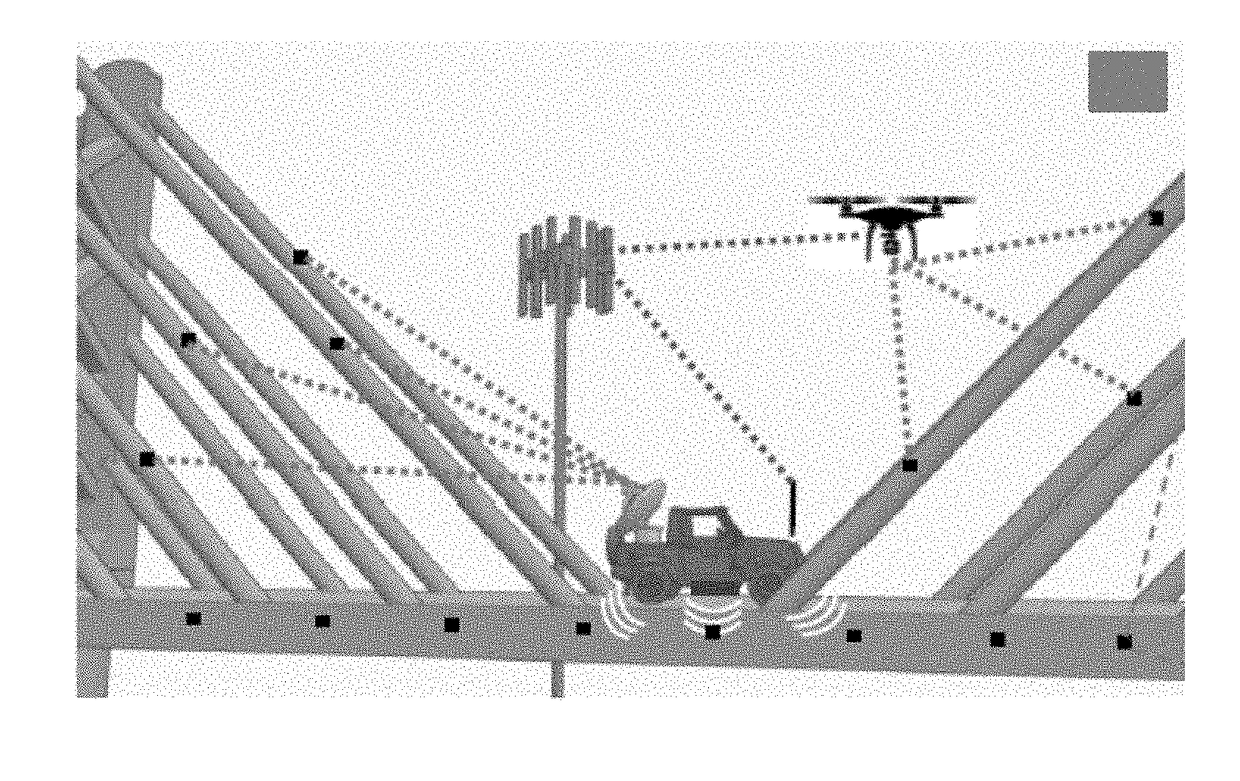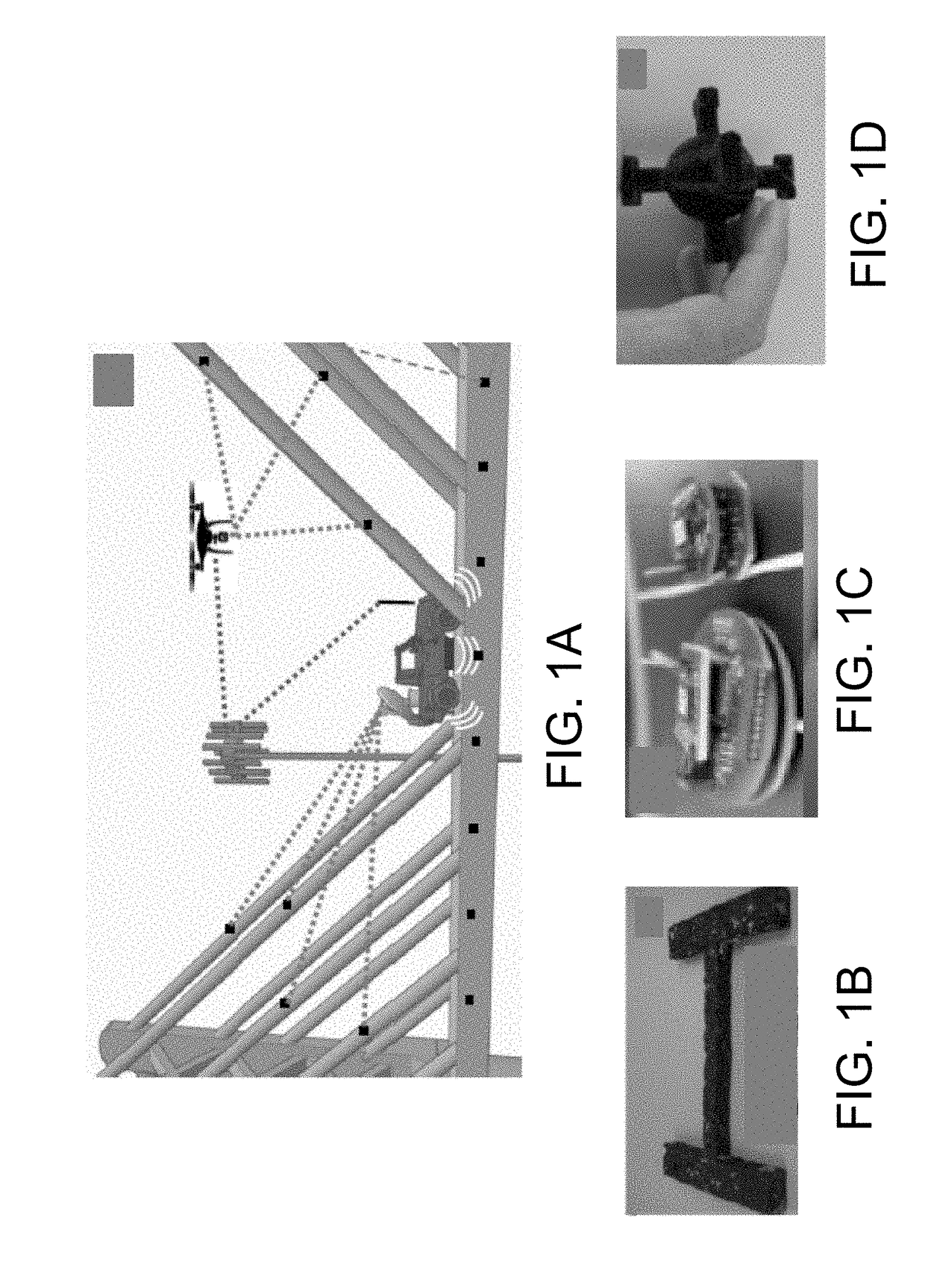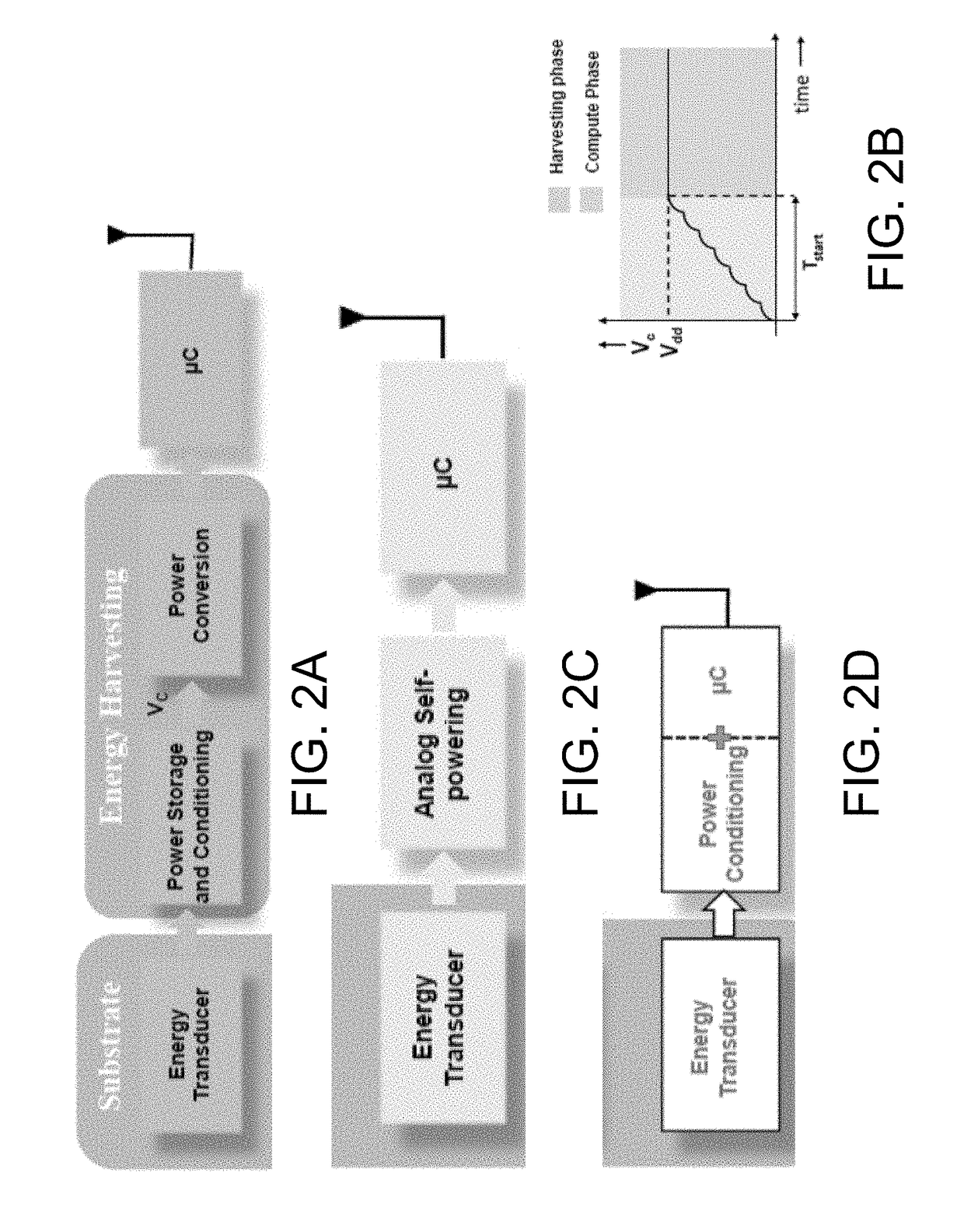Systems and methods for embedded sensors with variance-based logic
- Summary
- Abstract
- Description
- Claims
- Application Information
AI Technical Summary
Benefits of technology
Problems solved by technology
Method used
Image
Examples
example 1
Variance-Based Logic and Mean-Based Logic Energy Efficiency
[0095]The energy-efficiency of variance-based logic (VBL) can be compared to the traditional mean-based logic (MBL) by visualizing the process of logic transition, as shown in FIGS. 10C and 10D. For a specific implementation of MBL, the logic transition can be realized by transferring electrons from one potential well to another, as shown in FIG. 10C. The height of the energy barrier E1 which determines the reliability of a logic state is set to be at least E1>KT , where K is the Boltzmann's constant and T is the temperature at which the MBL device is operated. During the logic transition (0 to 1 for example), the energy barrier is lowered and the potential wells are reshaped in a way that the electrons move to the potential well corresponding to logic 1. The energy barrier E1 is then restored and held until the next transition. Assuming irreversible computation and adiabatic transport of the electrons between the potential ...
example 2
Variance-Based Logic and Mean-Based Logic Signal-to-Noise Ratio
[0103]One of methods to approach the fundamental limit of energy-dissipation for MBL is to use error-correcting codes to compensate for high pavg. A more practical approach would be to first boost the signal-to-noise ratio (SNR) of the measurement through repeated sampling and statistical averaging. Given N independent and identically distributed (iid) random samples x1, x2, . . . xN from a distribution with mean μ and variance σ2, the sample mean ({circumflex over (x)}) is defined as:
x^=∑i=1NxiNEquation14
and sample variance is given by:
σ^2=∑i=1N(xi-x^)2N-1.Equation15
The signal-to-noise ratio (SNR) for the measurement is given by:
SNR=E[x^]2E[σ^2].Equation16
In the case of MBL, it is given by:
SNRMBL=Nμ2σ2.Equation17
[0104]Even if the samples are drawn from any given probability distribution the definition of SNRmean holds. Whereas the variance of the sample variance becomes a function of fourth order moment and is estimated...
PUM
 Login to View More
Login to View More Abstract
Description
Claims
Application Information
 Login to View More
Login to View More - R&D Engineer
- R&D Manager
- IP Professional
- Industry Leading Data Capabilities
- Powerful AI technology
- Patent DNA Extraction
Browse by: Latest US Patents, China's latest patents, Technical Efficacy Thesaurus, Application Domain, Technology Topic, Popular Technical Reports.
© 2024 PatSnap. All rights reserved.Legal|Privacy policy|Modern Slavery Act Transparency Statement|Sitemap|About US| Contact US: help@patsnap.com










